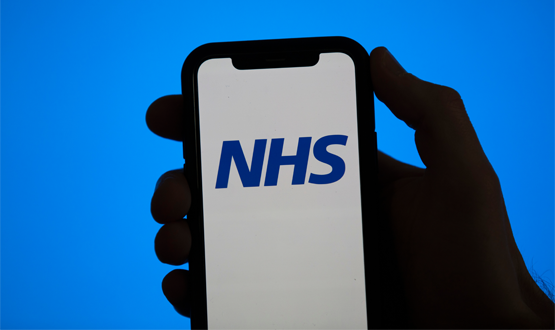The Big EPR Debate: the first 100 comments
- 24 April 2013

The NHS is once again being urged to adopt electronic patient records on an unfeasibly tight timescale.
NHS England is due to issue guidance in June on the plans that trusts are supposed to have in place by April for using electronic records by 2015; ahead of the NHS going ‘paperless’ by 2018.
Against this background, EHI has launched The Big EPR Debate in the belief that there is a very small, but real, window of opportunity to influence that guidance – or, at least, to get a handle on whether it will or will not do the job that needs to be done.
The launch of the debate triggered an amazing response, with more than 100 comments – many of them passionate, a lot of them detailed – posted on site in a week (and another 40 posted in the days after that).
What kind of health system is IT meant to support?
If there is one theme to come out of those comments, it is that few people would choose to start from here. But forced to start from here, commenters long for clarity on where, exactly, they are meant to be going.
Management consultant Colin Jervis – “cjervis” – for instance, noted repeated calls in the comments for EPRs to support integrated care, but asked “what integrated service does the EPR support?”
“I am concerned that we have not learned all of the lessons of the NPfIT (good and bad) and that we seem once again to be embarking on a technology project that is not supporting new models of care delivery,” he added.
“This time ensure we are clear about what business model we are moving to, and then we can decide on the design of the IT systems we need.”
In line with this, a number of commenters called for June’s guidance to focus on end points, rather than systems, and to define success in terms of outcomes.
“KamalTPP”, for example, argued: “The June guidance should set achievable outcomes… within certain timescales. It does not need to be overly prescriptive in its methods as long as the outcomes are set.”
Who are the real ‘customers’ for an EPR?
However, this may not be as easy as it sounds, given that EPRs have a number of users, with potentially competing ideas about the benefits they should deliver.
A number of commenters joined the debate specifically to call for patients to be given a voice. Yet others argued that patients are not the primary users of an EPR, even if they might benefit from access to some of the information it might contain.
As “matthewr” posted: “I think clinicians are the key users rather than the patients [because] they will be the ones using it every day… and if it is a pain to use or makes their lives more difficult the EPR will just cause misery and bad feeling.”
These commenters argued that NHS England needs to make sure that clinicians are involved in future developments. Joe McDonald, chair of the CCIO Leaders Network advisory panel, urged trusts to appoint chief clinical information officers as a first step.
Yet there is a question of ‘which clinicians?’ An early strand of comment urged acute clinicians to go and see what their GP colleagues were up to.
But some felt that while a visit to a GP practice might show a hospital doctor that ‘paperless’ working is possible, it might not show them much more, given that hospitals have different, sometimes very specialist, clinical requirements, and trusts work within different policy and payment structures.
Recognising this, regular poster “mrtablet” argued that the NHS should completely rethink its approach to IT, building systems around “individual patient billing”.
Another poster, “personal opinion” argued that if clinical commissioning groups insisted on this, it would answer another question – how to persuade finance directors and chief executives of the need to invest in IT when it’s clear that central funding is unlikely.
“Suppliers of healthcare accountable for everything they do – otherwise they don’t get paid. Now there is a good carrot for you.”
First define your terms
With so much uncertainty about the type of health service that IT is meant to support, and who the main customers for that IT are supposed to be, many commenters argued that there is a pressing need for policy makers to define their terms.
“So, the first question: what are we discussing?” asked long-serving GP and regular commenter, Mary Hawking. EHI is using the term EPR to mean the core, organisational record on which other initiatives – including secondary uses – can be built.
Most commenters appear to back this, although columnist Johan Waktare – “jwaktare” – argued that EPR fails to capture some important elements of what healthcare IT should be trying to achieve.
“Electronic – ok, not perfect but conveys what is needed. Patient – yes, good, like that one. Record – here is a problem. We are setting our ambition far too low.
“How about Information Technology Enabled Patient Care Management System? Less snappy, but [it brings together] two underlying strands; clinical decision support [and] data handling.”
Commenters also appear to agree with another premise of The Big EPR Debate, that acute care – where NPfIT most signally failed to deliver – needs most urgent attention when it comes to delivering EPRs.
However, with GP computing now so far ahead that information exchanges between primary and secondary care are being based on GP systems, there is a desire to see the EPR idea expanded.
“Ouch” summed this up by posting: “Sharing clinical data within the local health economy is the goal. Having electronic clinical records in secondary care is the pre-cursor (they already exist in primary care).”
Information for Health, the 1998 strategy that was replaced by NPfIT, used the term electronic health record for ‘cradle to grave’ records or those that crossed traditional healthcare boundaries, while NPfIT tried ‘integrated care record’ and NHS England appears to be toying with ‘integrated digital care record.’
Dr Hawking sees a tension between developing EPRs in hospitals and developing the infrastructure to share records – or possibly just information – more widely.
"I fail to see how local detailed records would be possible without a great deal of cross-organisational infrastructure: how does this fit with the development of secondary care EPRs?” she asked.
Building one step at a time
Within hospitals, many commenters argued that an EPR is not a thing so much as a journey. A number argued that the ‘steps’ to EPR model developed back in the 1990s by the first NHS IT strategy and by IfH still have validity.
“Many people outside informatics see the EPR as a single solution that can effectively buy from one supplier. This sets people off trying to find THE right one,” posted “PhilC273”.
“If we could agree a good description, or even better a very clever diagram that sets out all the main elements of an EPR and then sequences them in terms of dependencies we would be better able to define what needs to be procured, in what combinations, and to achieve what outcomes.”
The next big step in The Big EPR Campaign will be a survey to ask readers to define these elements in more detail; and to prioritise the order in which they should be tackled.
Yet that leaves the issue of how to tackle them. It is striking that no commenters have posted anything like “developing an EPR is simple; you just phone [insert major healthcare IT supplier name here] and get them to deliver one.”
But even “It is I, LeClerc” is willing to consider “a single, monolithic” approach. “What was offered / provided by [NPfIT’s] local service providers failed [often] because it was so far behind that which many already had.
“But if something substantially better, integrated across the NHS and capable of handling the multiple patient / organisation entities been ready and proved, I think I would have taken it,” he posted.
“PhilC273” also warned that while “it is not realistic to buy a single solution” the NHS should also avoid buying “a bag of bits.” Yet other commenters are enthusiasts for “best of breed” approaches and portals.
Stand by for standards
To underpin interoperability, a number of commenters urged not just the adoption but the mandating of standards.
Dr Neelam Dugar – “Neelam Dugar” – a radiologist who has led the call for the adoption of standards in digital imaging and other IT systems, called for “common global standards for images, documents, indexing, transfer and messages (DICOM, CDA/PDF, XDS, XDR and HL7 are the common set).”
She added opting for a standards-based vendor neutral archive would put trusts in a good position to start sharing images, records and other documents between departments – and more widely.
Johan Waktare added, in another post, that: “Interoperability is not just about data sharing but what data is being shared. Can we add SNOMED CT coding of diagnoses and Dictionary of Diagnoses and Medicines [DM+D] compliant medicines information, please?”
But poster "CanUSeeTheLight" argued that simply saying that standards should be adopted will not be enough, given that "the NHS has had since the time of Mrs Thatcher a data dictoionary which all suppliers should adhere to but do not."
Forcing them to comply is they key, he argued. And other commenters called for a focus on upgrading infrastructure to support new systems, and to get them onto modern, mobile devices; and to gather proper, robust evidence on what works and what doesn’t.
More thoughts, please
Overall, then, the debate so far tends towards urging NHS England to focus on the basics; to define the kind of health system that IT is meant to support, and the kind of modern technology that will be needed for the challenges of the future.
To be clear about what is meant by ‘paperless’, ‘electronic record’ or ‘integrated digital care record’, and what these terms are meant to convey and achieve. To focus its guidance on the outcomes that installing systems are meant to achieve, perhaps for a variety of users, without ever losing sight of the business case.
To avoid being overly prescriptive – except, perhaps, when it comes to mandating standards for both IT and information gathering and use – but to lay out the steps that trusts might take on their route to EPR and IDCR.
Do you agree? Whether you do or not, the comment button awaits…




